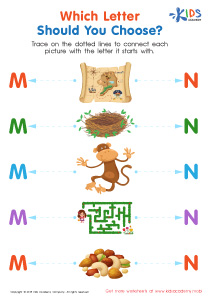Lowercase identification Normal Lowercase/Small Letters Worksheets for 4-Year-Olds
4 filtered results
-
From - To
Discover our engaging "Lowercase Identification Normal Lowercase/Small Letters Worksheets" specifically designed for 4-year-olds! These worksheets provide young learners with a fun and interactive way to identify and recognize lowercase letters. Each activity is crafted to enhance letter recognition skills, promoting early literacy development in an enjoyable manner. With colorful illustrations and age-appropriate challenges, children can practice tracing, matching, and identifying lowercase letters. Our worksheets are perfect for parents and educators looking to enrich their preschool curriculum. Instill confidence in your child's reading journey with these thoughtfully designed worksheets that make learning lowercase letters a delightful experience!
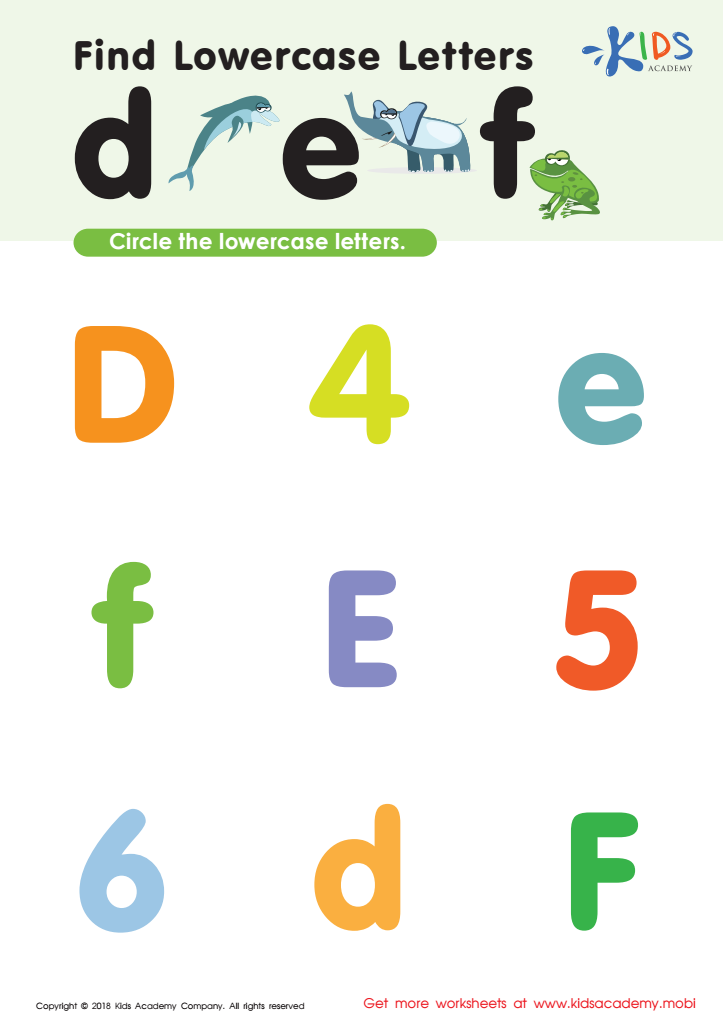

Find Lowercase Letters d e f Worksheet
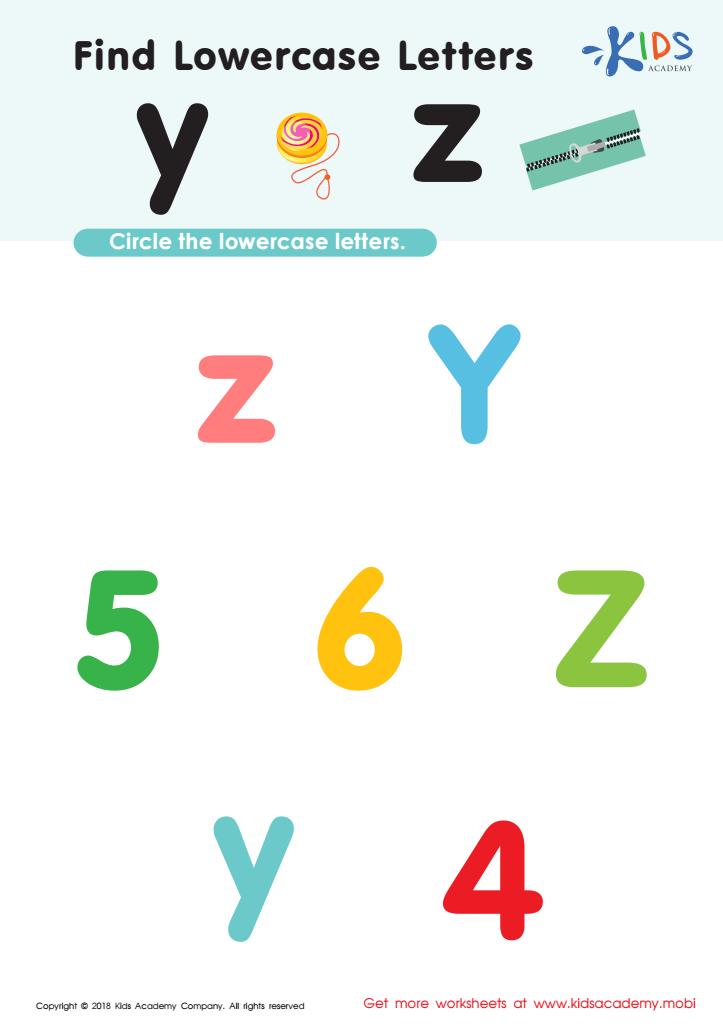

Find Lowercase Letters y z Worksheet
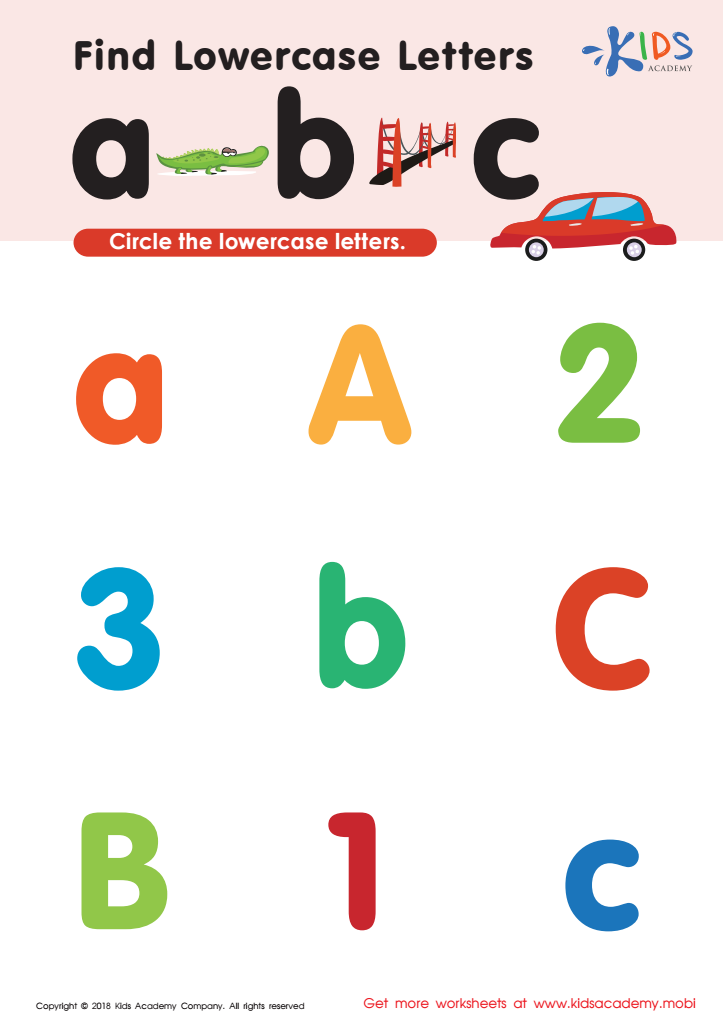

Find lowercase letters a b c Worksheet
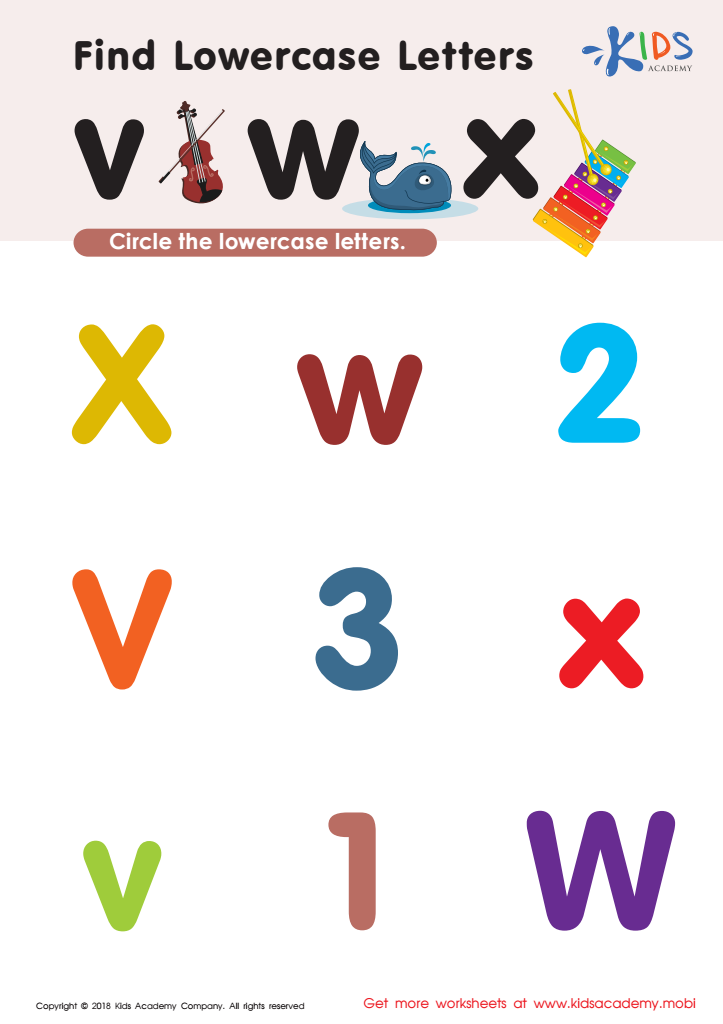

Find Lowercase Letters v w x Worksheet
Lowercase identification is a crucial foundational skill for 4-year-olds as it sets the stage for literacy development. Recognizing and distinguishing lowercase letters enables children to read and write simple words, facilitating their overall language acquisition. When children learn to identify lowercase letters, they begin to understand how words are formed, promoting phonemic awareness—the recognition of sounds associated with each letter.
Additionally, many texts children will encounter in their early reading experiences predominantly use lowercase letters. Familiarity with these letters eases the transition into reading basic books, enhancing their confidence in emerging readers. Teachers and parents can further support this development through interactive activities, such as alphabet games, storytelling, and writing exercises that focus on lowercase letters.
Furthermore, mastering lowercase letters bolsters fine motor skills, as children practice writing and tracing them. Early writing leads to stronger communication skills, allowing children to express their thoughts more clearly. Teachers and parents alike should engage in nurturing lowercase identification, creating an enriching and supportive environment that promotes literacy, cognitive development, and a love for reading. Ultimately, investing time in lowercase identification forms an essential part of helping young learners embark on their educational journey.
 Assign to My Students
Assign to My Students




